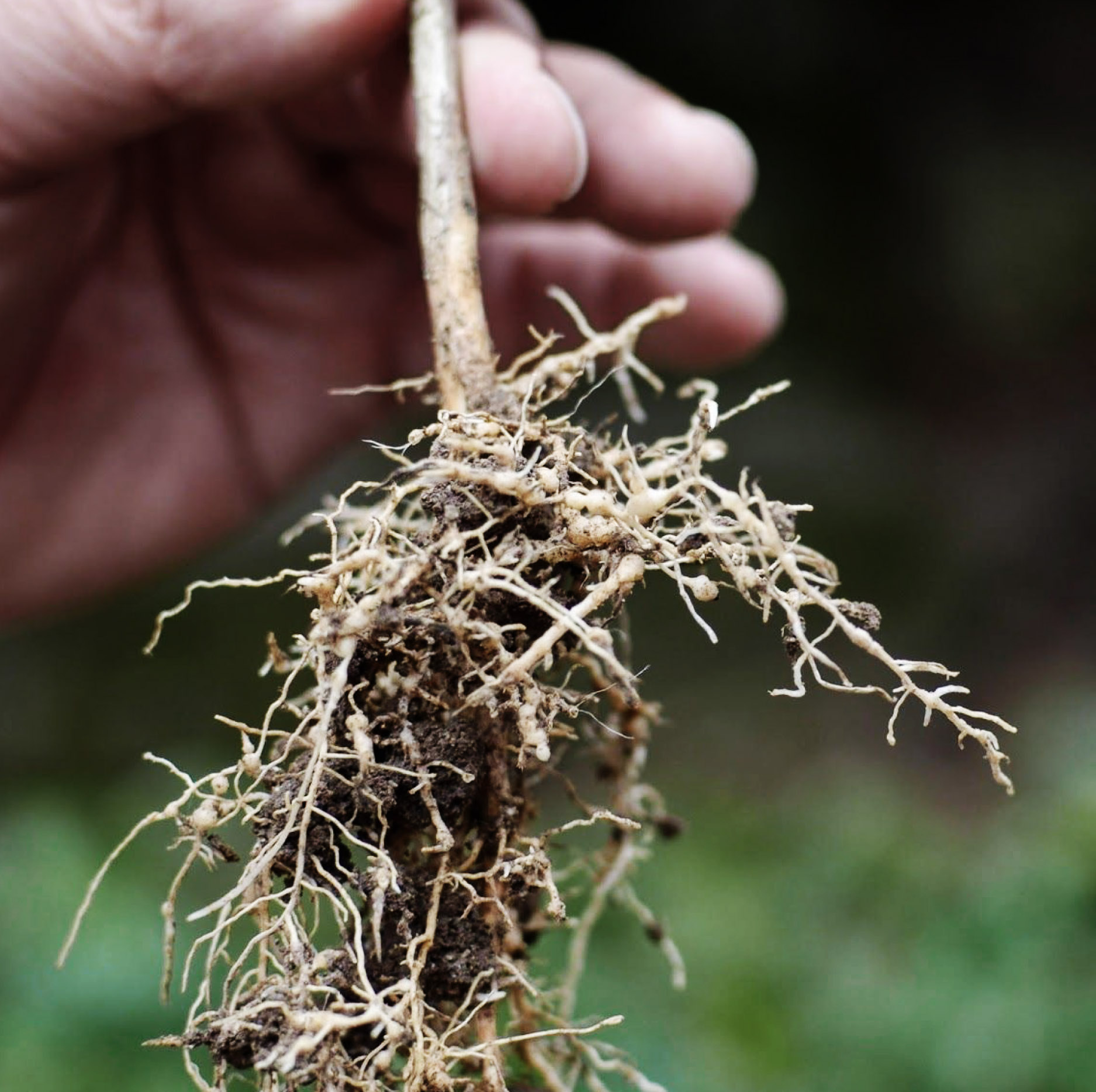Nematodes
Nematodes are a multispecies group of root-invading parasites. Though over 2000 species of nematodes affect many crops around the world, the methods of their invasion of coffee plants are similar. The juvenile nematodes, which look disturbingly like microscopic snakes, burrow into the roots.
The nature of this particular parasite highlights the problems in using traditional copper-based fungicides in the control of disease such as leaf rust and coffee berry disease. The growth of nematodes in soil is usually held in check by benevolent microbial activity in healthy soil. Copper residues in soils can persist long after an outbreak of rust and reduce populations of microbes in such a way that the nematodes have an opportunity to take control of the roots of coffee plants.
The most common type of nematodes affecting coffee are ‘root knot nematodes’. After the roots are colonised by the young, the roots develop large growths known as galls. These growths have the effect of reducing the plant’s performance. In the best-case scenario, plants will experience a 20% drop in yield (J. M. Waller et al, 2007). The worst-case scenario in a severe infestation results in defoliation and die-back leading to total crop failure.
The pest is found worldwide but has proven to be a particular problem in Brazil. As the rainforest has been cleared for farming, indigenous species have moved to coffee plants. Data from surveys carried out in Minas Gerais, Brazil’s biggest-producing state, showed the species Meloidogyne exigua to be in 22% of soils from coffee plantations (Campos, 2002). As a result, Minas Gerais nurseries must have a certificate issued by an official nematology laboratory stating the absence of RKNs in their premises (Campos V.P., Silva J.R., 2008).
 Nematodes M. Exigua, a type of root-knot nematode. Photo by Tim Willems; reproduced with the kind permission of Bridazul, Nicaragua.
Nematodes M. Exigua, a type of root-knot nematode. Photo by Tim Willems; reproduced with the kind permission of Bridazul, Nicaragua.
Controls
There is no complete cure for plants with severe infestations.